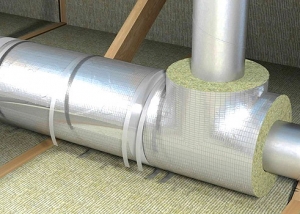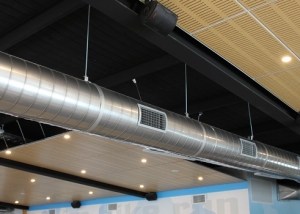Cleaning ventilation ducts is a very important event, which is aimed at removing human vital products from ventilation communication. Various contaminants, regardless of the type of ventilation, accumulate in the pipes during operation. For convenience, when cleaning the ventilation duct, it is recommended to install special inspection hatches. In addition, such hatches perform other functions (for example, through them the condition of the duct is monitored).

Ventilation cleaning - a necessary measure that allows you to maintain the system in working condition
Content
Why clean ventilation systems?
One way or another, over time, human vital products, dirt, dust, etc. accumulate in ventilation ducts. A polluted duct is less productive, from an operational point of view, since foreign deposits on the inner walls of the channel reduce ventilation throughput. Consider other problems that arise during the operation of a contaminated ventilation structure:
- increased risk of fire communication. The dust that is deposited in the ducts is usually dry and one spark is enough to ignite it;
- non-compliance with sanitary standards;
- in contaminated communications, the likelihood of failure of such elements as: fans, air conditioners;
- a contaminated system through which air moves into residential or work premises causes a poor microclimate;
- the risk of morbidity of residents or staff increases.
Helpful information! Almost half of the polluting foreign particles gets into the living quarters, through ventilation communication. In order to reduce the rate of contamination of the ventilation duct, experts recommend the use of special filters. However, they are not a guarantee that ventilation will not clog with time.
Thus, over time you will have to clean the contaminated structure. Air ducts are cleaned by various methods, which can be either mechanical or chemical. In order to clean the air duct, they often resort to dismantling it, but this long process can be avoided if you take care of the organization of the inspection hatch in advance.
Types and sizes of ventilation hatches
Hatches for cleaning air ducts are used in various fields. Depending on the operational features, these devices are divided into two main types:
- audit;
- metering.
Revision. Such products are also called inspection or inspection. Installation of such inspection hatches is carried out on the channels of airway communications. They are used to control ventilation chambers. The convenience of this technology eliminates the need to dismantle the ventilation structure to clean the air duct from contamination. Such hatches are used to carry out an auxiliary measure, namely, to measure air parameters inside the air-borne system.

Cleaning is carried out through special hatches that are equipped when installing the ventilation system
Pitometry. Used for measuring air parameters in ventilation structures. The metering hatch is not used to clean the ducts.
The material from which such devices are made may be different, however, in most cases they are made of plastic and galvanized steel. Depending on the shape of the section, they are of two types:
- rectangular;
- square.
Today there is a wide assortment of sizes of inspection hatches from 10x10 to 60x60 cm.
Features hatches for cleaning ducts
To measure the air parameter in ventilation communication, both types of hatches (inspection and pit meter) can be used. Inspection products can be used both for routine revisions and for full-scale cleaning of airway communications.
Note! Hatches are selected depending on the shape of the ventilation structure. Ducts can be round or rectangular.
For round and rectangular ventilation structures, different hatches are used. However, from a constructive point of view, they are not much different from each other. Installation of the hatches is carried out the same way as on round communications, and on rectangular ones: the product is a plate that is fixed to the ventilation duct by means of special screws.
Installation of inspection windows simplifies the process of monitoring the internal channel, since it is extremely difficult to carry out a ventilation check, which is not equipped with such devices. In addition, inspection windows can reduce the overall cost of maintaining ventilation communications.
Where are inspection hatches located?
In some situations, viewing devices for ventilation communication can be performed as ventilated windows. In such cases, the design of the hatch implies the presence of an inspection hatch and an exhaust grill. As a rule, such windows can be found on communications that operate due to the natural movement of air currents. Installation of ventilated hatches is carried out on the duct and is simple. The element is fixed by means of dowels or self-tapping screws.
However, in other situations, the inspection window for cleaning the ventilation system is a separate device that performs specific functions. Inspection products are recommended to be mounted on straight sections of air ducts (for convenience). In addition, it is worth noting that it is best to install such viewing windows in open areas that are in the public domain.
The installation of inspection hatches is allowed to be performed not only on the walls of the ventilation ducts, but also in other places:
- on fans;
- to heat exchangers.
The distance between the viewing windows that are installed on the ventilation structure should not exceed 8-10 meters. Proper installation of the hatch allows you to clean a separate segment of the aeronautical communication.







